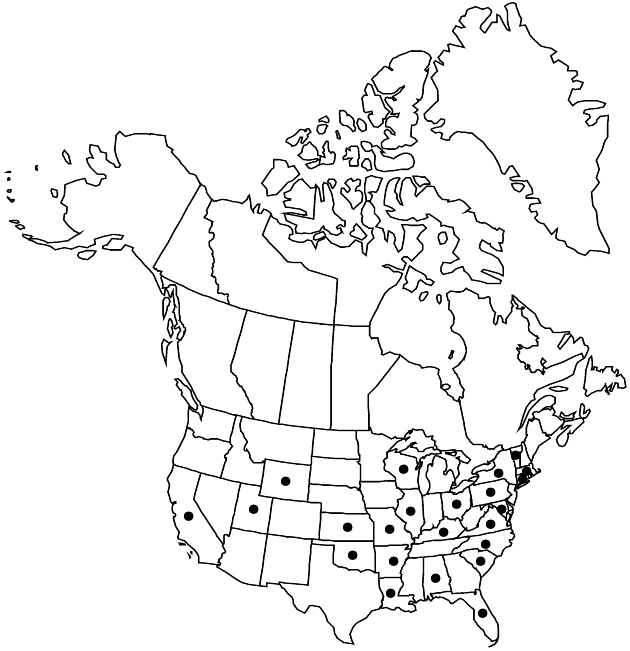Tagetes erecta
Sp. Pl. 2: 887. 1753.
Annuals, 10–120+ cm. Leaf-blades 30–120 (–250+) mm overall, principal lobes/leaflets 9–25, lanceolate to lance-linear, 15–25 (–45+) × 3–8 (–12+) mm. Heads borne ± singly. Peduncles 30–100 (–150+) mm. Involucres 10–22+ × (3–) 5–12+ mm. Ray-florets (3–) 5–8+ (to 100+ in “double” cultivars); laminae yellow to orange, redbrown (sometimes particolored: yellow/red-brown), or white (some cultivars), ± flabellate to oval-quadrate, (2–) 12–18 (–25+) mm. Disc-florets (10–) 50–120+; corollas 7–12+ mm. Cypselae 6–11 mm; pappi of 0–2, ± subulate-aristate scales 6–12+ mm plus 2–4 distinct or connate, linear-oblong, ± erose scales 2–6+ mm. 2n = 24, 48.
Phenology: Flowering ± year round.
Habitat: Disturbed sites
Elevation: 0–1000+ m
Distribution

Ala., Ark., Calif., Conn., Fla., Ill., Kans., Ky., La., Md., Mass., Mo., N.Y., N.C., Ohio, Okla., Pa., S.C., Utah, Vt., Va., Wis., Wyo., Mexico
Discussion
Cultivars of Tagetes erecta are widely grown in gardens and, commercially, for cut flowers. They often persist after abandoned plantings. Tetraploid plants (2n = 48) with smaller involucres and wholly or partially red-brown corollas included here in T. erecta have been called T. patula by some botanists.
Selected References
None.